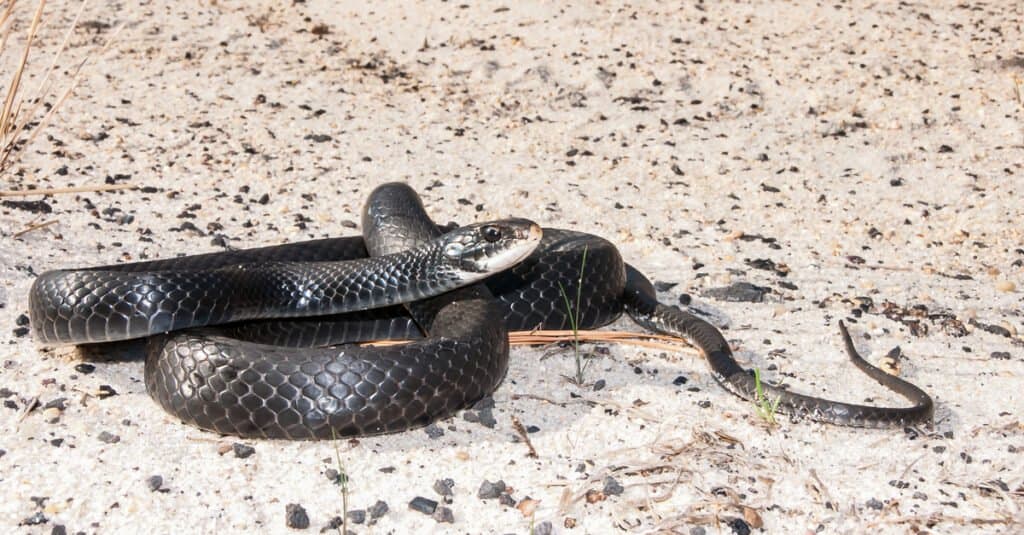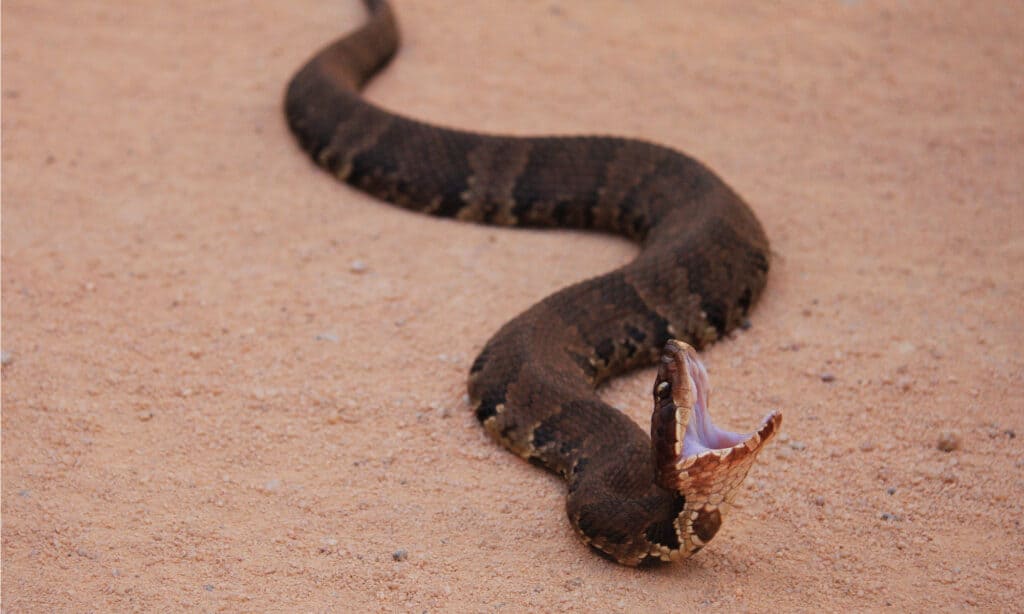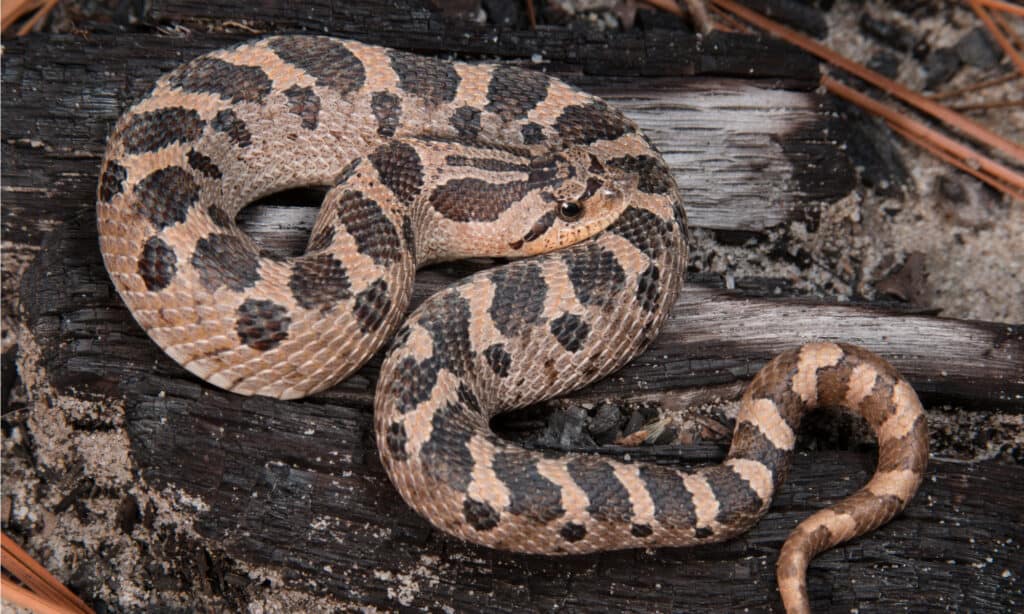Snakes are one of the most common animals in Georgia. They are found in virtually every habitat within the state – from forests and grasslands to rivers and swamps, to urban areas. They come in all shapes and sizes, including some so small you might barely even notice them. In total, 46 species of snakes call Georgia home, and of these, six are venomous. However, given the potential threat that venomous snakes pose, quite often, people don’t want to risk a snake lurking around their backyard, so they kill it. But is it illegal to kill snakes in Georgia? Join us as we find out!
Is it Illegal to Kill Snakes in Georgia?
It is illegal to kill non-venomous snakes in Georgia but legal to kill venomous ones. This is because non-venomous snakes pose no threat to humans and are actually useful to have around. There are also additional laws in place to protect endangered and threatened non-venomous snakes whose populations are in decline.
Non-Venomous Snakes

It is illegal to kill any non-venomous snake in Georgia.
©Jay Ondreicka/Shutterstock.com
There are around 40 non-venomous snakes native to Georgia, and it is illegal to kill any of them. Not only that, but it is also illegal to even keep a native non-venomous snake as a pet without the correct permit. This Georgia law is designed to protect non-venomous snakes as they are harmless to humans and are actually incredibly beneficial to the ecosystem. It’s also important to note that although some species – such as ring-necked snakes – are mildly venomous to their prey, they are not venomous to humans and are covered by this law. Breaking this law is classed as a misdemeanor and is punishable with up to one year in jail and a $1,000 fine.
Although many people instantly assume that any snake is dangerous as soon as they spot one, that is not the case. Some non-venomous snakes can give a nasty bite, but they pose no real threat to humans. Instead, snakes are actually incredibly useful as they play an important role in maintaining the ecosystem. This is because they prey on many pest species such as rats and mice, therefore keeping rodent populations in check. Also, non-venomous snakes such as kingsnakes prey on many species of venomous snakes – meaning they’re pretty useful to have around!
Venomous Snakes

Many harmless water snakes are mistaken for cottonmouths and killed as a result.
©Nathan A Shepard/Shutterstock.com
There are six species of venomous snakes in Georgia – eastern copperheads, cottonmouths, timber rattlesnakes, eastern diamondback rattlesnakes, pygmy rattlesnakes, and coral snakes. Eastern diamondback rattlesnakes are generally considered to be the most dangerous venomous snake in Georgia. This is due to their size, the length of their fangs, and their high venom yield. While it is illegal to kill native non-venomous snakes in Georgia, it is legal to kill the venomous ones. Although like non-venomous snakes, venomous ones can be beneficial as they prey on a lot of pest species, it is legal to kill them as they do pose a threat to people.
Unfortunately, as it is legal to kill venomous snakes in Georgia, there are always going to be cases of mistaken identity where non-venomous snakes are killed instead. In most cases, it is harmless water snakes that are killed. This is due to their similar appearance to cottonmouth snakes and because they share many of the same habitats. A lot of the time, this happens because people see a water snake and just instantly assume it is a cottonmouth.
However, just because it is legal to kill venomous snakes, it doesn’t necessarily mean that we automatically should. The official advice is to leave venomous snakes alone if you come across them and instead call a professional. Most venomous snakes are more likely to flee when they come across humans. It is only when they are cornered or threatened that they strike. As a result, most bites happen when people disturb them and attempt to move them or kill them.
State and Federal Protection

Southern hognose snakes are also protected as a threatened species in Georgia.
©Nathan A Shepard/Shutterstock.com
Although it is illegal to kill any non-venomous snakes in Georgia anyway, two species are further protected under state and federal law. The Endangered Species Act 1973 (ESA) prohibits the killing of endangered animals and means that they are protected by law. Any violation is punishable with stricter punishments for the most severe breaches. The two main categories are endangered and threatened. Under the law, endangered animals are classed as any species other than pests that are in danger of extinction. Threatened animals are classed as animals that are likely to become endangered in the foreseeable future.
Eastern indigo snakes are classed as a threatened species under the ESA. This means that they are protected throughout the entire US, rather than just Georgia. Eastern indigo snakes are the longest snake native to North America, with a maximum length of around 7.5 feet long. The main reason for their threatened status is due to habitat loss. In the main, this is caused by the expansion of urban areas. Their preferred habitats are pine flatwoods, prairies, fields, and marshes.
Along with the eastern indigo snake, southern hognose snakes are also protected. However, they are protected at the state level rather than the federal. Under the rules of the ESA, animals that are endangered or threatened within state boundaries but not across the entire US can be protected within a state instead of nationally. As a result, southern hognose snakes are a Threatened species within Georgia and protected as such. Interestingly, although they are not classed as being threatened across the entire US, they are listed as a vulnerable species on the IUCN red list. This is due to an estimation of there being fewer than 10,000 mature individuals left.
The photo featured at the top of this post is © Nathan A Shepard/Shutterstock.com
Discover the "Monster" Snake 5X Bigger than an Anaconda
Every day A-Z Animals sends out some of the most incredible facts in the world from our free newsletter. Want to discover the 10 most beautiful snakes in the world, a "snake island" where you're never more than 3 feet from danger, or a "monster" snake 5X larger than an anaconda? Then sign up right now and you'll start receiving our daily newsletter absolutely free.
Thank you for reading! Have some feedback for us? Contact the AZ Animals editorial team.






